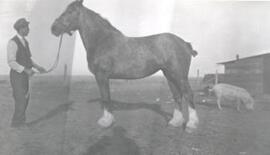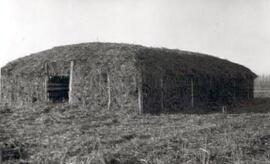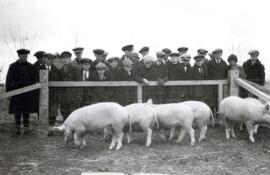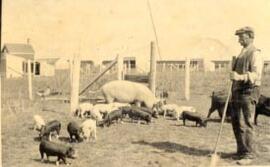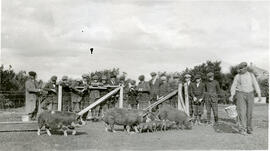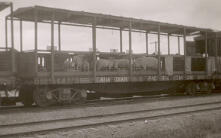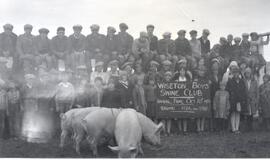- A-2101
- Pièce
- [191-?-192-?]
Fait partie de University of Saskatchewan Photograph Collection
A champion shire horse, British breed of large heavy draft horses, at Toronto and Ottawa, being held with a halter in a yard. Pigs and buildings in background.
Bio/Historical Note: By 1910, 19 horses had been purchased by the College of Agriculture that were good work horses or suitable for student class work. Two were purebred Clydesdales. Three light horses were also purchased. One named Barney was used in the morning to deliver milk to faculty in Nutana and in the afternoon on the buggy as Dean Rutherford made his farm rounds. In 1920 the Province asked the Animal Husbandry Department to establish a Clydesdale breeding stud. This led to development of an outstanding collection of prize winning horses that became a focus of the Department. In the 1920s the Percheron and Belgian breeders also demanded support for their breeds and so they were included in the university stud and some cross breeding was undertaken. The campus horses were used for field work for all Departments, general hauling and site work for new buildings. An unofficial use was for the Lady Godiva ride across campus each fall. By the 1940s it was clear that the era of horses as a main source of farm power was over. The final stallion used in the breeding program was the imported "Windlaw Proprietor," grand champion stallion at the 1946 Royal Winter Fair.

